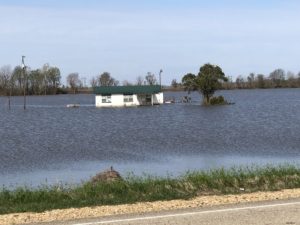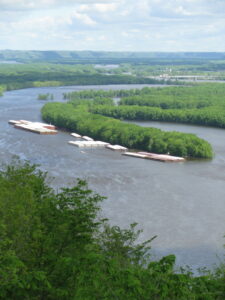(reworked from Iowa’s Wildside Column 8-27-1989)
“When will they ever learn…?” the refrain from Pete Seeger’s song circled in my mind as I reviewed columns, I wrote for the Cedar Rapids Gazette. One stood out. Iowa’s rivers and their then deteriorating condition.
Old Issue Newly Revisited
Over the past 18 months, The Gazette’s environmental writer, Brittney Miller, has addressed Iowa’s poor water quality and its impact on aquatic life.
Ah, yes, when WILL we ever learn? This is a revisit of my column from 30+ years ago.
Iowa is embraced by two of North America’s mightiest rivers – the Missouri and the Mississippi. An interesting network of streams feeds them. The height of land that divides the two drainages follows a barely perceptible rise along a northwest-southeast ridge in the western quarter of the state.
“Let The Rivers Run”
As though Paul Bunyon drew his fingers through Iowa’s geological sandbox, the major tributaries line up in roughly parallel lines flowing southeast to the Mississippi and southwest to the Missouri.
Native Americans and settlers followed these rivers. Later, steamboats, loaded with farm equipment, household goods, and finery pushed their way upstream to then bustling communities. As Iowa’s agricultural economy boomed, grist mills appeared. Farmers exported their grains to Eastern cities along Iowa’s waterways. Emerging railroads and silting waterways hastened the demise of mills. Then, hydropower proved profitable until coal and nuclear power took over.
“Managing” Water

A typical spring scene in the South. Homes under water.
Earliest settlers cussed the Missouri for being too thin to plow and too thick to drink. They couldn’t tolerate its unruly, flood-prone behavior so Congress authorized channeling it with the “Missouri River Stabilization and Navigation Project.” Today, the Missouri is mostly an emasculated drainage ditch – until it rebels and reveals its power, as it has done in recent years.
Consequences
Gone are the oxbows, meanders, belt of trees, and diverse wildlife. Iowans value farmland over natural riparian habitats beneficial to mammals, birds, reptiles, insects, and aquatic life. Oh, and us!
Mighty Mississip

The Mississippi River stretches from Minnesota to the Gulf Coast.
The Mississippi River was dammed and dredged to provide sufficient depth for barge traffic. The dams did create numerous backwaters that support wildlife, but the Great River cannot flush itself out, so it chokes in its own silt. That toxic-laden silt slides downstream poisoning the Gulf and disrupting commercial fisheries there.
What Floodplains Do
Flood plains are areas for all wild and roiling rivers to spend their energy. The dissipated water helps recharge wetlands, and cleanses and naturally replenishes groundwater supplies. Sediment filters out on flood plains, enriching the soil.
Again and Again and Again
As we build and rebuild on flood plains, we keep spending untold dollars trying to conquer the natural elements. As residential, industrial, and agricultural demand for water increases, we rely more heavily on groundwater. That source is stressed, too. The multi-year droughts Iowa has experienced have impacted the aquifers. Lower water tables and tainted water supplies result.
When WILL we learn that our water supplies are important and to treat them respectfully and carefully?

